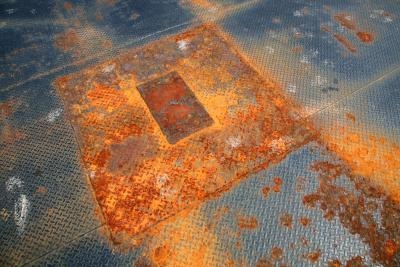
Sandblasting metal prior to painting is an extremely efficient way to remove built-up layers of dirt and damaged paint, giving you a clean, undamaged substrate on which to apply new paint. While some materials, such as aluminum, can be painted without other preparation due to their inherent corrosion resistance, steel must be carefully primed with zinc coating prior to painting, particularly when you are doing vehicle bodywork.
Wet one of the rags with wax and grease remover, then thoroughly wipe the part that has been sandblasted first with the wet rag, then with the dry rag. This will remove any residue of grease or dust produced by the sandblasting process, leaving the metal in its natural state. Use caution to avoid touching the metal with your hands since the oils on your fingers can damage paint.
Dust the metal with a light coat of the self-etching primer, being careful to avoid using too much. The primer has a slightly green shade and should appear as little more than a tint of the metal, rather than an all-over primer. Allow the primer to dry according to the package instructions.
Spray the part with epoxy primer next, providing at least three light coats. Putting too much epoxy primer on results in runs or sags in the part, requiring sanding. Applying several light coats prevents the need for sanding. Allow the epoxy primer to dry according to the package directions before applying paint to the sandblasted part.
Paint the sandblasted part with your choice of paint. If necessary and when using paint requiring it, follow this step with the application of clear top coat to finish the project.